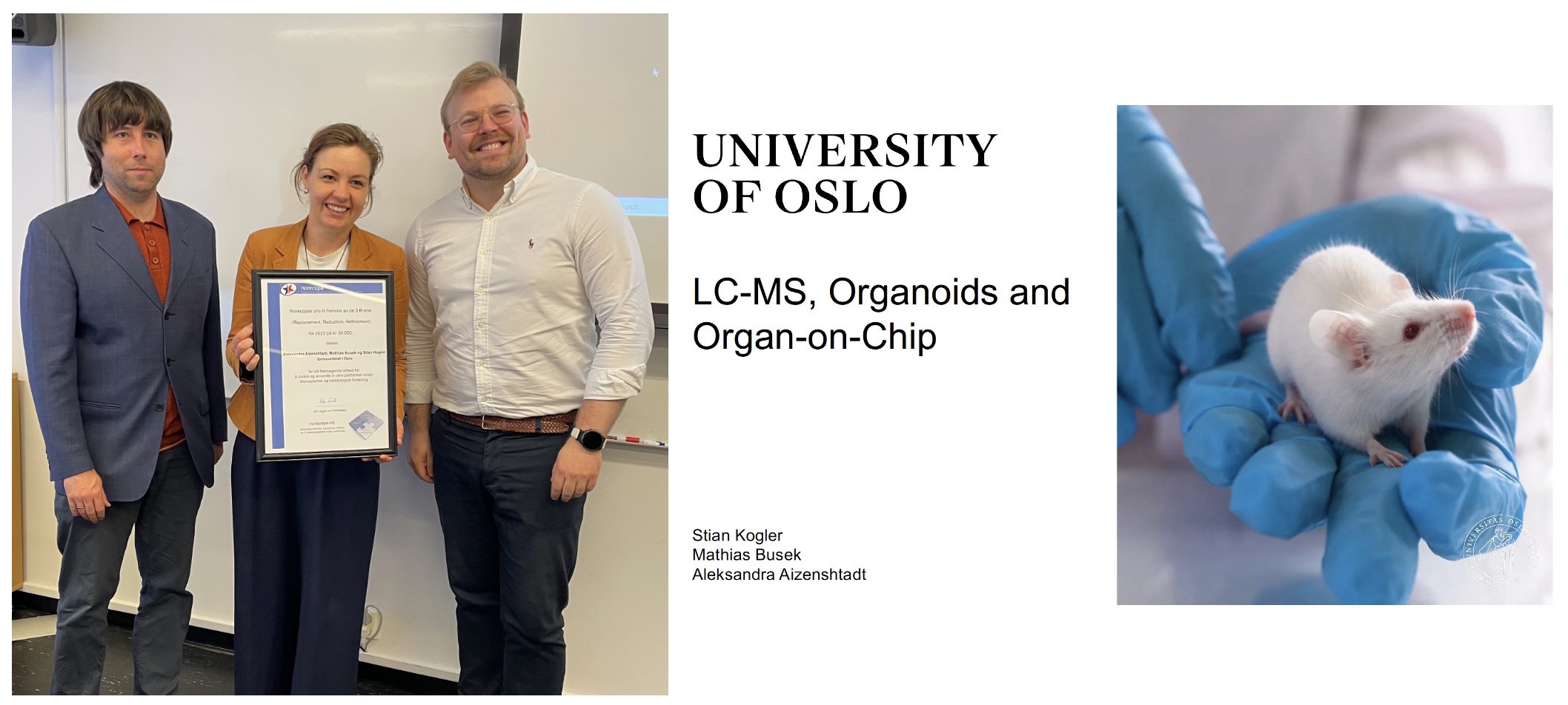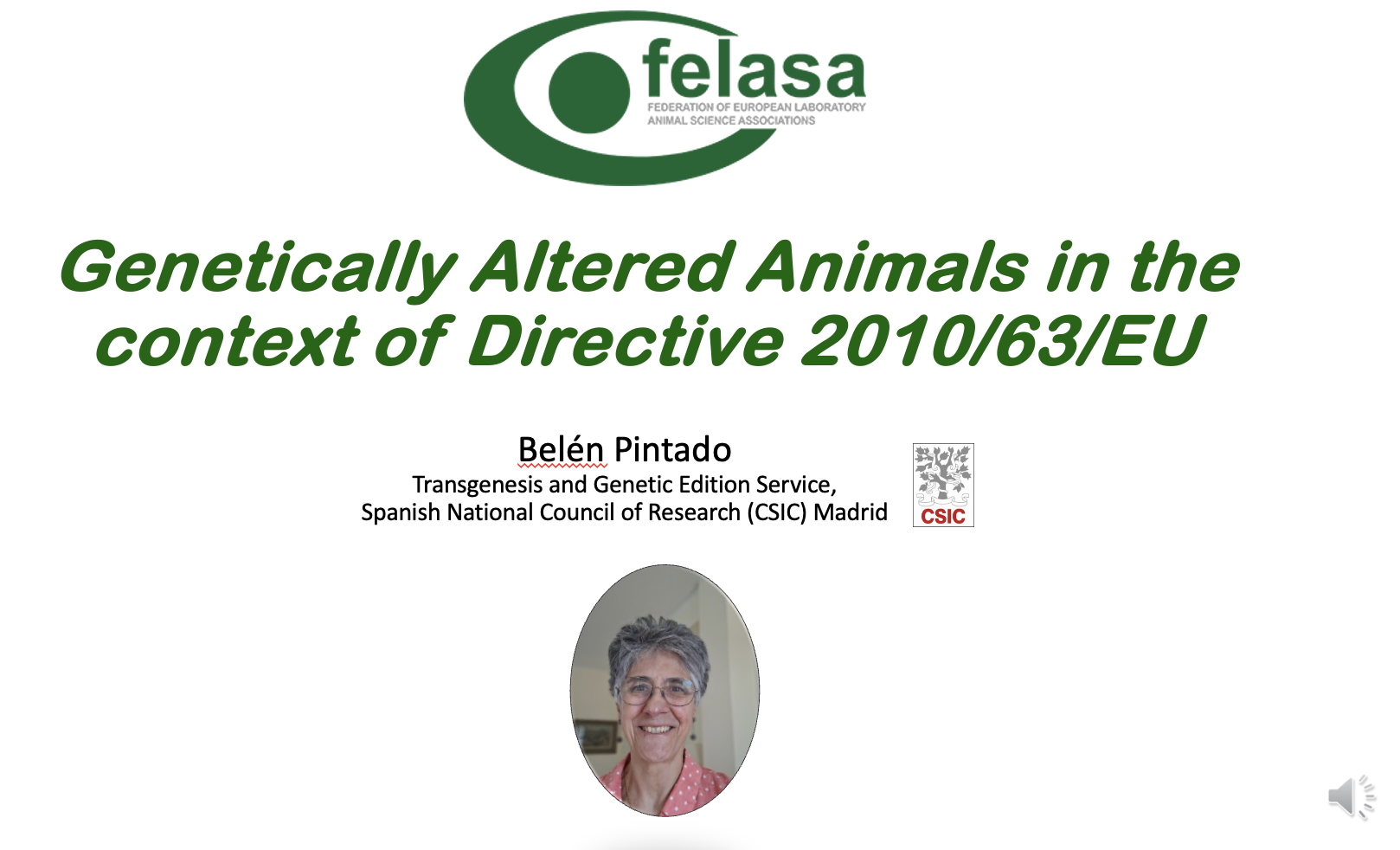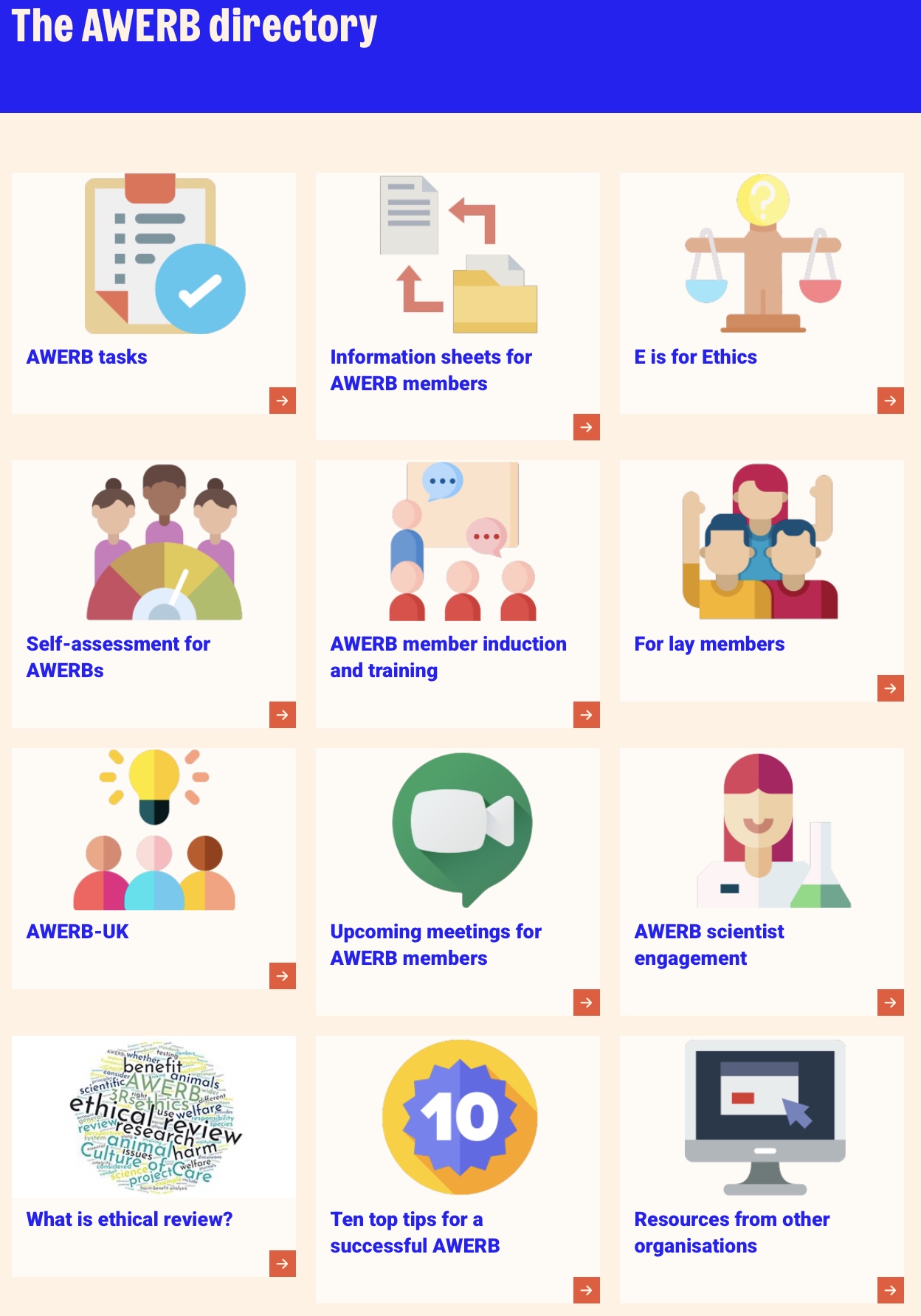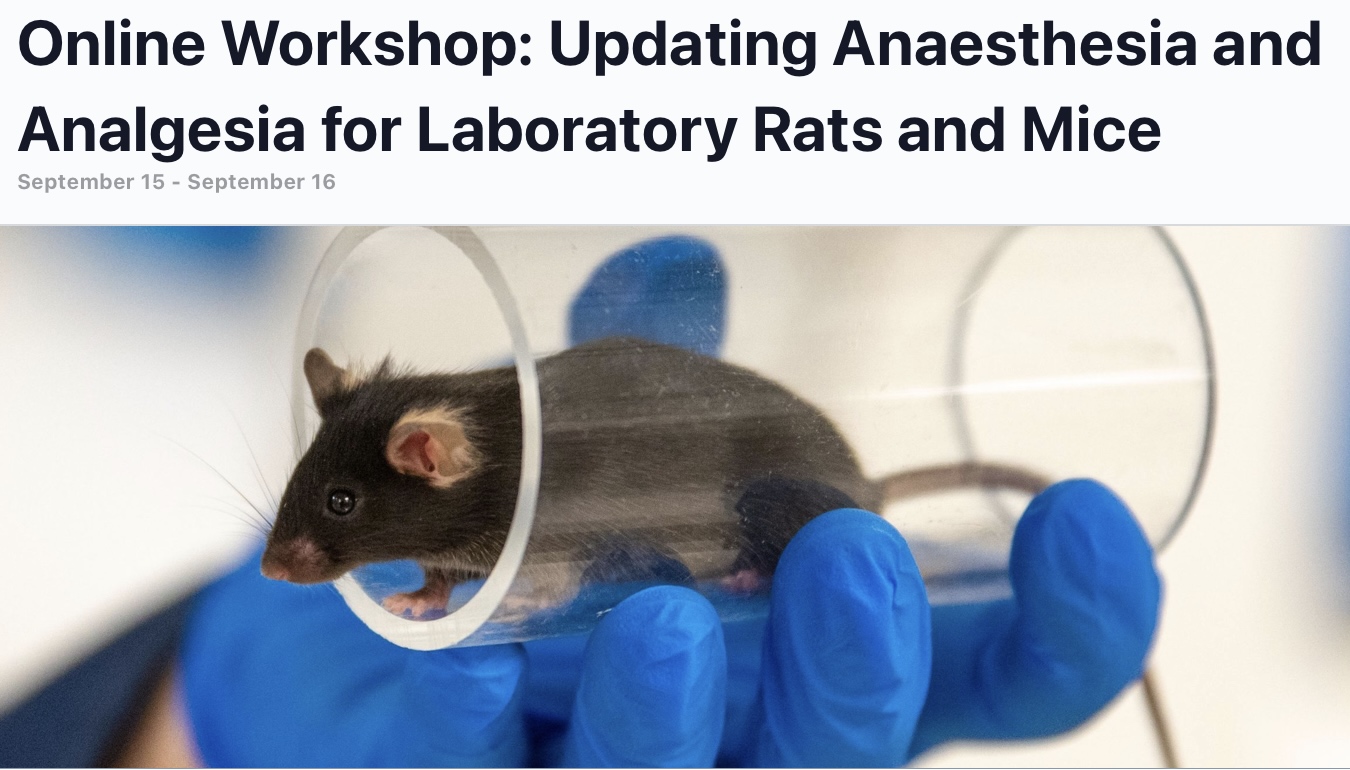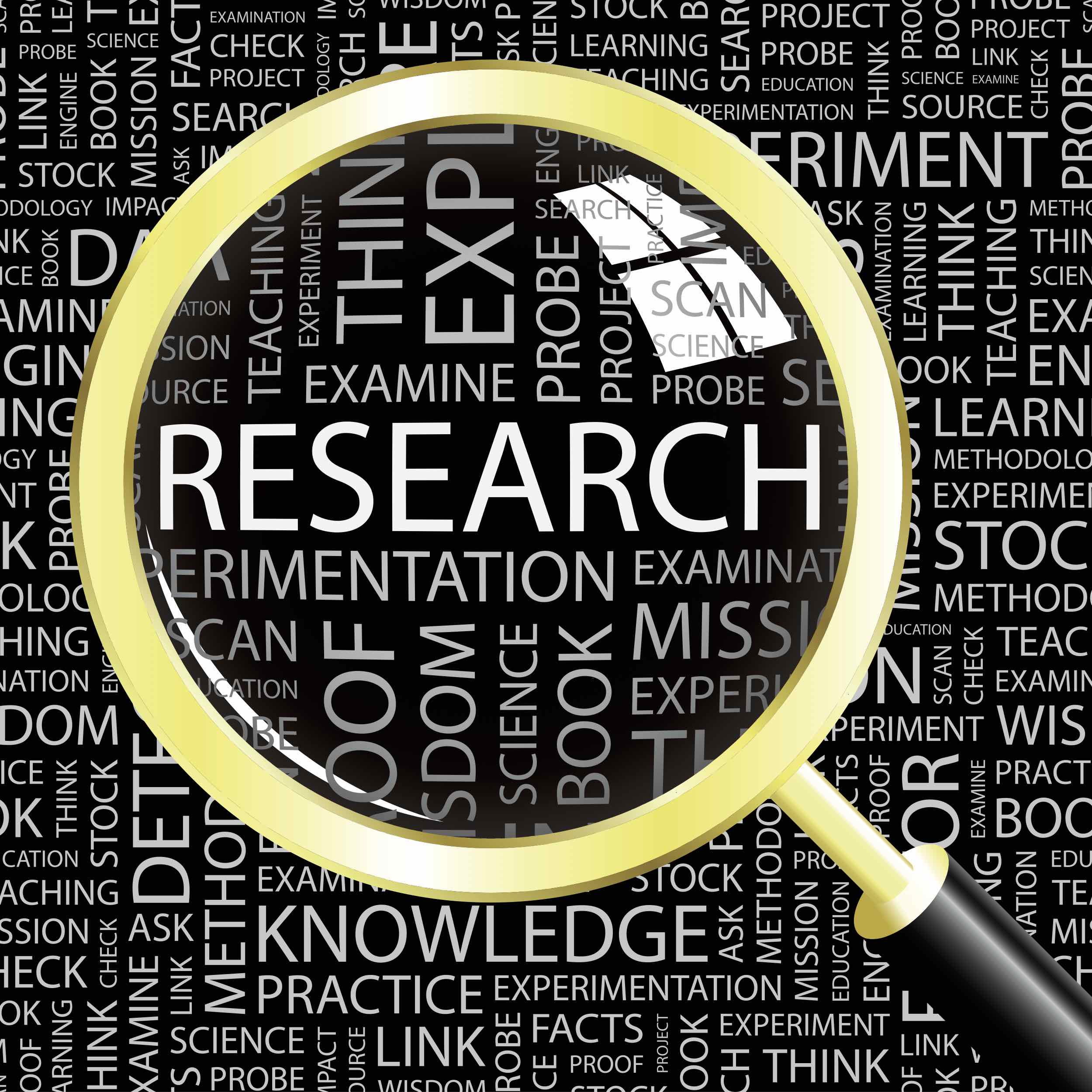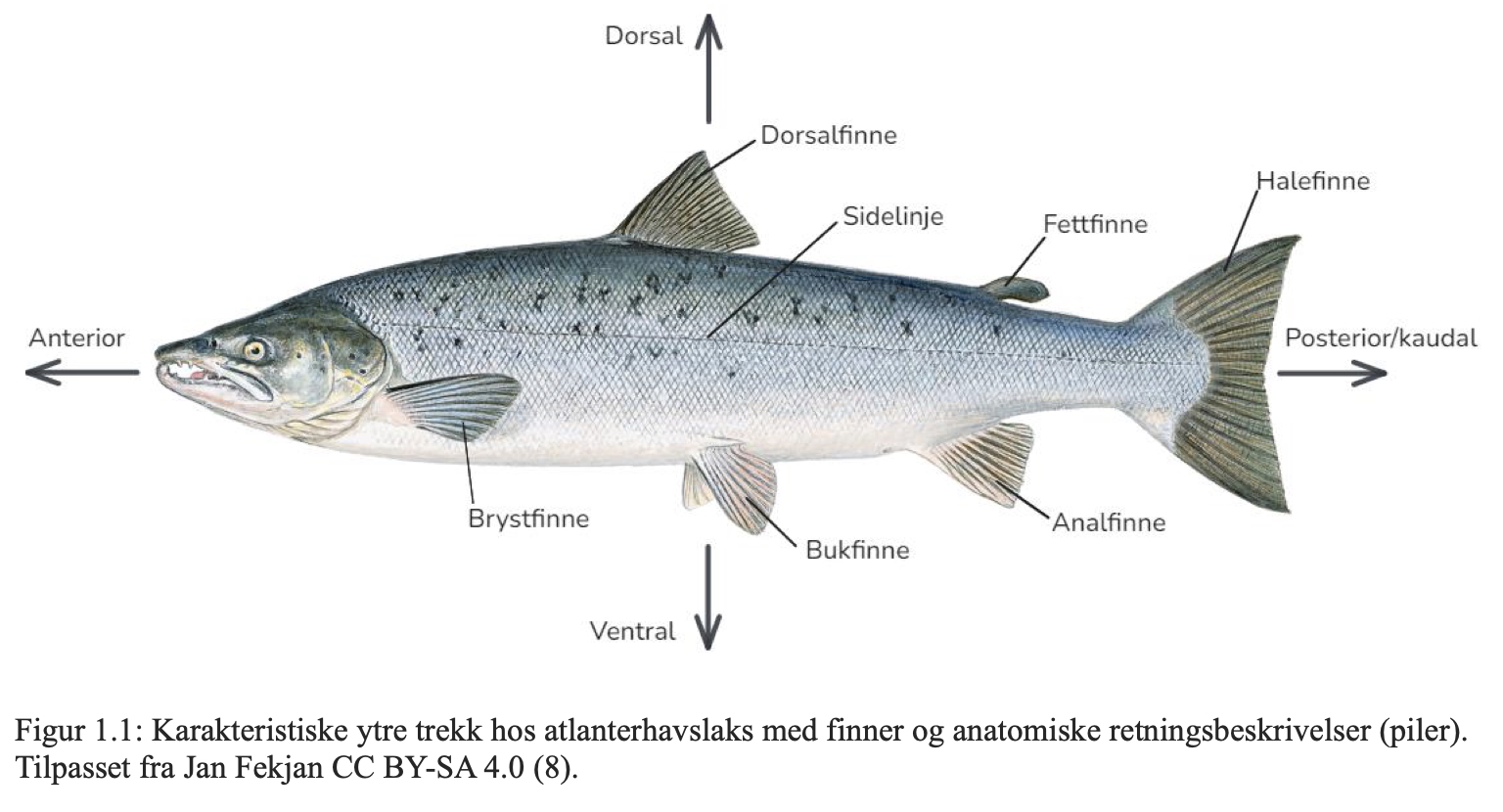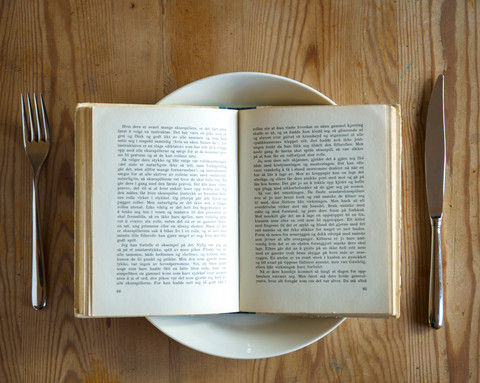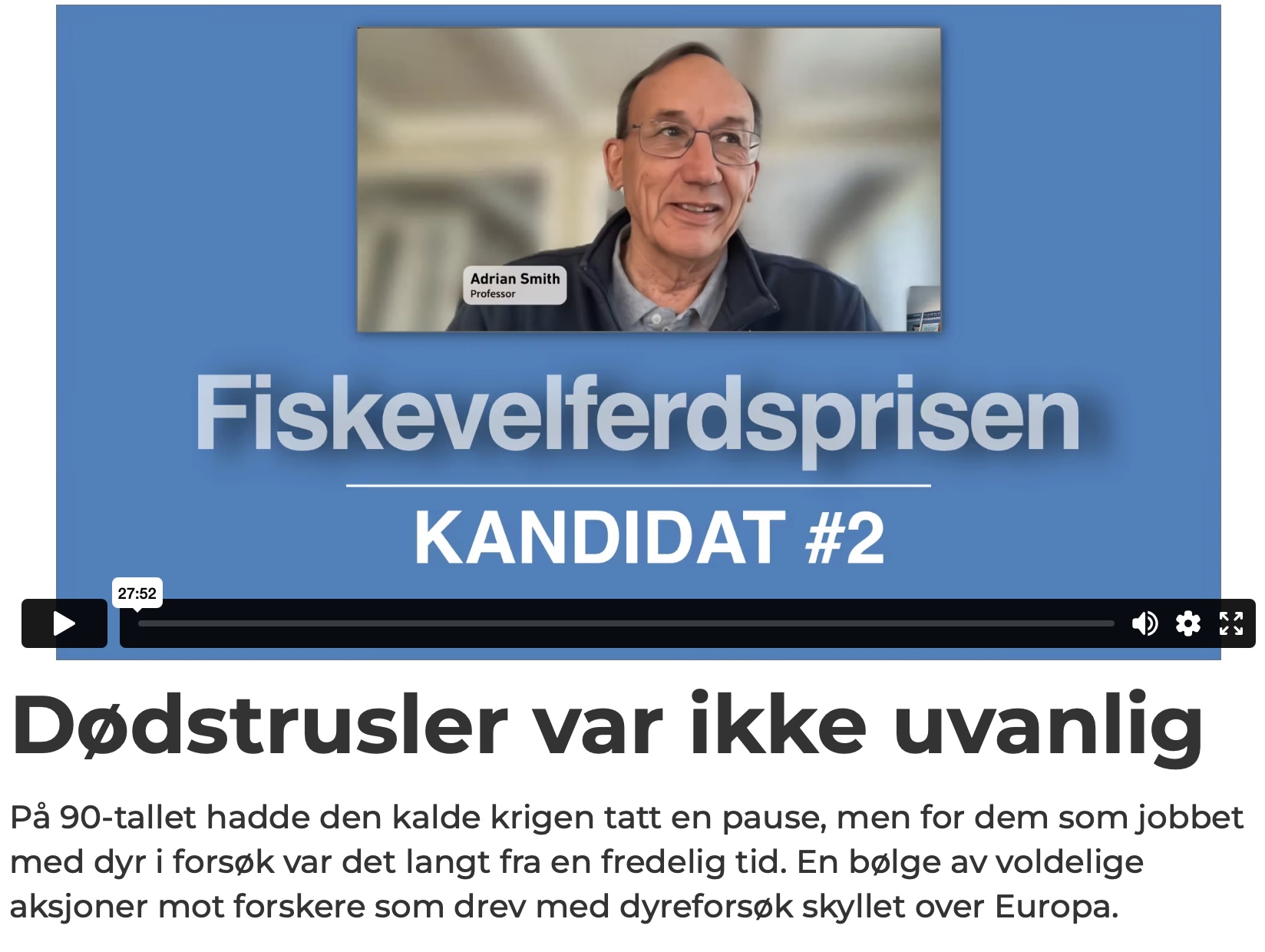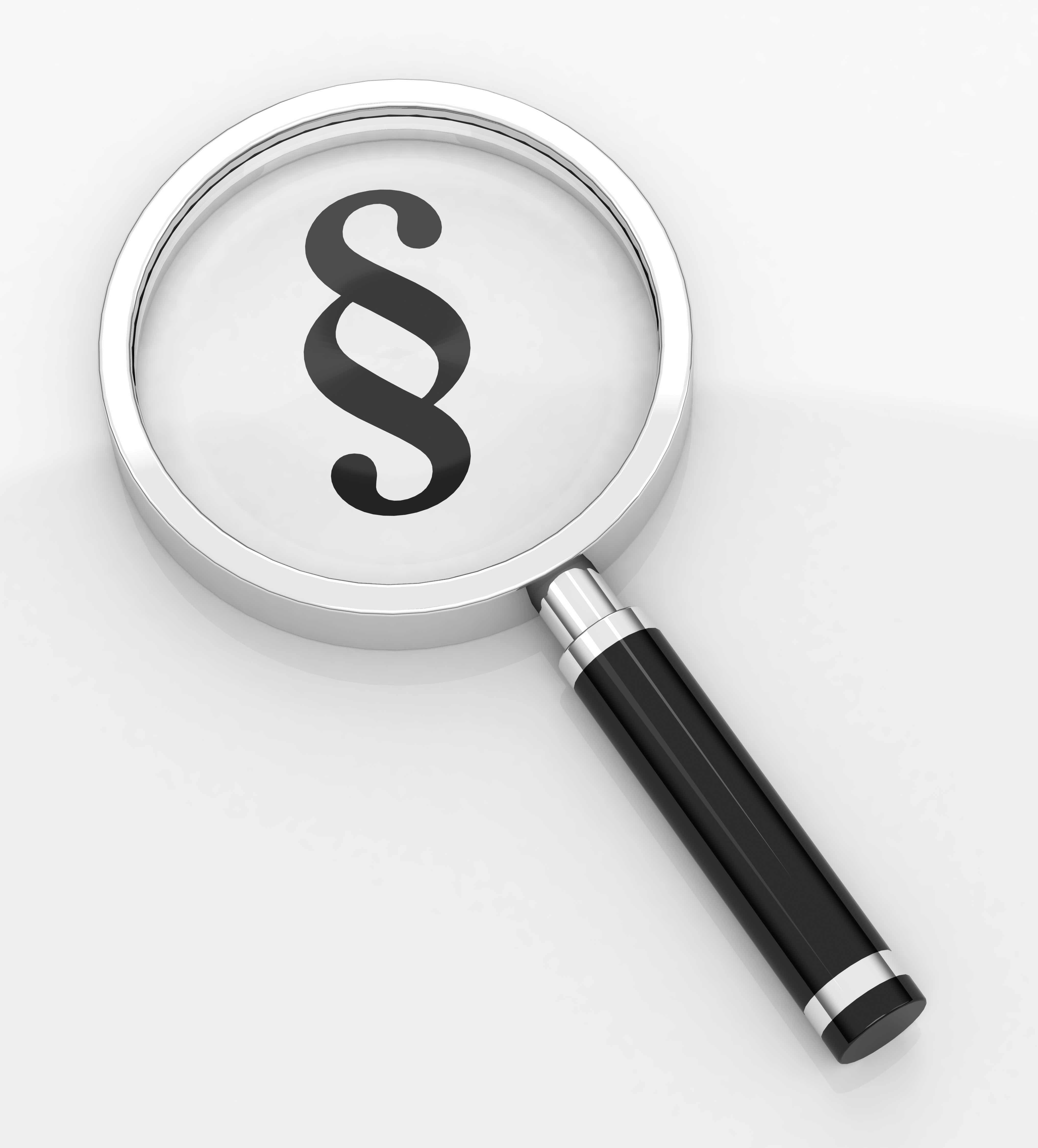|
Newsletter no. 3-2025 from Norecopa
Welcome to Norecopa's third newsletter of 2025. This is the 128th newsletter which we have issued.
We hope you find them of use! We
welcome feedback, positive or negative.
Please share this newsletter with your colleagues and friends, and encourage them
to subscribe!
We are also on
LinkedIn and (to a much lesser extent) on
Facebook.
This newsletter contains the following items (if some links do not appear to work, check that your mail program has opened the whole of the newsletter):
|
•
|
|
|
•
|
|
|
•
|
|
|
•
|
|
|
•
|
|
|
•
|
|
|
•
|
|
|
•
|
|
|
•
|
|
|
•
|
|
|
•
|
|
|
•
|
|
|
•
|
|
|
•
|
|
|
•
|
|
|
•
|
|
|
|
The two months since Norecopa's last newsletter have been extremely busy, but also very constructive. Before the summer vacation, we highly recommend a look at Norecopa's
Webinars & Meetings Calendar. There are already 70 entries from now until the end of the year.
Friday 10 October is Norecopa's 18th Birthday! Save the date, we plan to celebrate it. There will be a link in the Calendar to more information nearer the time.
Norecopa's Secretary Adrian Smith has been informed by the Norwegian Veterinary Institute that his position has been extended a second
time, from 1 February 2026 to 31 December 2026 (he was originally due to retire on 1 February 2025). This is good news for Norecopa, because it gives more time for the organisation to relate to the results of the Ministry's deliberations about the establishment of a 3R Centre in Norway.
The UK Home Office has published the Non-Technical Summaries of all projects approved in the first quarter of 2025.We have therefore updated the overview of uptake of the
ARRIVE guidelines and Norecopa's
PREPARE guidelines, see the attached illustration. The near identical uptake of these planning and reporting guidelines is in accordance with the role for which PREPARE was intended: complementary guidelines at each end of
the research path.
As mentioned in the previous newsletter, Adrian Smith contributed to a UK meeting on 2 April organised by the Animals in Science Committee (ASC) for the Chairs or nominated representatives of AWERBs
(Animal Welfare and Ethical Review Bodies), entitled "AWERBs and the thorny issue of replacement". His presentation was
Resources for AWERBs on assessing replacement available on the Norecopa website. A Report from the meeting
will be published here soon.
Adrian Smith lectured on planning animal research at the
Replacing Animal Research (previously FRAME)
Training School in Experimental Design in Dublin on 13 June.
On 24 June he held the keynote presentation at an online meeting entitled
Advancing the 3R in Europe - Challenges, Opportunities, and Best Practices, organised by the German Ministry of Research, Technology and Space. His presentation was on
the 3Rs in the European Landscape.
Adrian Smith was a guest in a podcast about the 3Rs in a series entitled "Organoids and a large portion of Chips", organised by
WORC.Community, a social media network for those working with organoids, organs-on-chips and NAMs.
He has also been
interviewed on TikTok. The recording is also
available on Google Drive.
|
|
Norecopa's
3R-prize was awarded for the 14th time in connection with the Annual Meeting and scientific seminar.
The Prize, consisting of NOK 30,000 and a diploma, went to three scientists at the Chemistry Department, University of Oslo, for their outstanding work towards replacing animal testing with advanced lab-grown models such as organoids (miniature organs grown from human cells) and organ-on-chip systems. These models will in time allow
drugs to be tested using cells from patients themselves.
Stian Kogler
held a presentation on behalf of the research group.
We congratulate the worthy winners!
|
|
Replacing Animal Research (known formerly as FRAME) have updated their excellent advice on Searching for Replacements (Introduction and
complete Guide).
Among other things they highlight Norecopa's collection of links to
over 80 relevant 3R databases and our
overview of global 3R centres.
Databases addressing
New Approach Methodologies are highlighted by
the Dutch TPI project. Norecopa has produced a webpage on the discussions surrounding the differences in definitions between
NAMs (New Approach Methodologies) and NATs (Non-Animal Technologies).
For those who have missed it, former FELASA President Belén Pintado published an important presentation last year, with practical examples, explaining
FELASA's guidance on Genetically Altered Animals in the context of Directive 2010/63/EU.
The EPAA
(European Partnership for Alternative Approaches to Animal Testing) has launched a call for
nominations to its Refinement Prize for 2025. The 6,000 € prize will be granted to a laboratory technician, animal caretaker or technologist who has demonstrated outstanding achievements in new, novel approaches to advance the implementation and/or awareness raising of refinement of animal testing. Applications
should be submitted by
Monday, 1 September 2025 at 1200 CET.
Do you work with guinea pigs? The
Institute of Laboratory Animal Science at RWTH Aachen University is conducting
a survey on their husbandry and treatment. All information provided is anonymous.
Please note that the survey closes on 30 June.
A German-language educational website on the use of pigs in biomedical research, created by the
3R Competence Network NRW for the World Day for Laboratory Animals in April, is
now available in English. They have a similar resource about
clawed frogs.
The accreditation association AAALAC International has issued a
Position Statement on Culture of Care at animal facilities.
Utrecht University has produced
a short cartoon film (1:36 min) on the concept of Culture of Care in Dutch, but there are English subtitles under the
Settings cogwheel.
A recording is available of the
Finnish Culture of Care Symposium held in April.
A
Meeting Report has been published about a Dutch initiative to create a Global Education Hub for Animal-Free Innovation. The hub will initially be established at Utrecht Science Park and will involve the creation of an online platform supported by a world-wide community.
|
|
Norecopa's Secretary attended the
16th FELASA congress in Athens in the first week of June, along with approx. 10 other Norwegians, not least Aurora Brønstad (University of Bergen) who had led the Scientific Committee. He also participated in the first international meeting of lab animal veterinarians, organised by IACLAM (International Association of Colleges of Laboratory Animal Medicine) which was held the day before. There were over 2,000 participants and exhibitors at FELASA, and
300 at the IACLAM meeting. The
scientific programme at FELASA was excellent, with up to six parallel sessions, a large commercial exhibition (with over 90 companies and 14 associations), workshops and poster sessions. In addition, many meetings were organised by associations. Norecopa sponsored the hire of a meeting room for the
International Culture of Care Network, and also the production of stickers featuring its logo and web address. The meeting also welcomed members of
ENAWB, a European Network for those countries which have national networks of animal welfare bodies. Norecopa hosts the websites of both these organisations, and these have recently been updated.
Adrian Smith held presentations at both meetings, chaired a poster session, and attended the annual general meetings of
Scand-LAS and
ESLAV:
•
The Path to Better Science: Resources from Norecopa (IACLAM)
•
The Norecopa website: A Guided Tour of Global 3R Resources (FELASA)
Norecopa is in the process of embedding information from the Congress in its website.
The
next FELASA Congress takes place in just two years' time, in Cologne in June 2027, hosted by
GV-SOLAS and under the banner of
Innovation, Ethics, and the 3Rs in a Changing World.
|
|
The UK organisation RSPCA has for many years produced resources to aid scientists and lay persons alike in the advancement of the 3Rs. They have recently collected their resources for the UK animal welfare bodies in
a special directory. These bodies are called AWERBs in the UK
(Animal Welfare and Ethical Review Bodies) because, unlike in many countries, they also perform ethical review of animal procedures, and these bodies contain lay persons who require assistance with evaluating scientific projects.
Resources include
advice on scientist engagement with AWERBs, to foster mutual understanding of their roles and to enable AWERBs to perform their functions effectively within a good Culture of Care.
The RSPCA has also produced an excellent
Roadmap for reducing severe suffering.
|
|
Paul Flecknell and colleagues have designed
a new online workshop on 15-16 September for laboratory animal professionals who already have some experience with rodent anaesthesia and want to deepen their understanding, update and refine current protocols, and explore the latest developments in multimodal pain relief. He writes:
Despite decades of research, anaesthesia and analgesia protocols
for laboratory rodents continue to rely heavily on just two main approaches - ketamine/xylazine and isoflurane. Meanwhile, post-operative pain management remains inconsistent, with many protocols still falling short of best practice.
If this new workshop is a success, they will be run annually.
Colleagues who are new to anaesthesia in laboratory animals, or have less experience, are recommended to complete the main anaesthesia workshop first. These workshops give a more
general introduction and include 5-6 hours of pre-recorded seminars on the different topics, building up to the more complex issues (see a description of
the previous workshop in May). The next of these will be in November 2025 (details will be published nearer the time).
|
|
Norecopa maintains a comprehensive
overview of courses in Laboratory Animal Science (LAS).
ETPLAS provides an excellent starting point for an overview of European resources, and they have developed a structured
framework for CPD (Continuing Professional Development).
There are currently
thirteen free online modules from the
LAS-learning project, a Dutch/Portuguese collaboration, under testing, for which they invite volunteers.
Some examples of other courses and resources are highlighted below.
A
2-year part-time Master program is run by Aachen University for those who have already at least one year's experience in LAS.
The
PAASP Online Training Program is a self-paced course introducing early-career researchers to essential principles of Good Research Practice (GRP). It covers key topics such as experimental design, data integrity, transparency, and measures to reduce bias — all critical for producing reliable and reproducible research results. The course takes approximately 14 hours and includes recorded lectures, reading assignments, quizzes, and homework
tasks.
The
FELASA Working Group on Experimental Design in Education and Training has published its recommendations.
The EU Commission has produced a
storyboard for developing 3Rs Educational Resources for use in secondary and higher education.
|
|
One of Norecopa's most important messages is the need for more species- and situation specific guidelines for all phases of research where animals seem to be needed. This section of Norecopa's newsletters is typically used to highlight these efforts for quality assurance.
The latest additions from publications this month are
a review by Michaela Thallmair and Paulin Jirkof on quality assurance of colitis models in mice (where they emphasise the need for good planning and reporting, combined with the use of a checklist previously published by
Bramhall
et al), and guidelines in a Report from a Pharmacology Working Group on preclinical epilepsy research studies. Both mention the
PREPARE guidelines.
Do you know of a checklist which should be highlighted?
Please contact us.
The EU funded
NAMWISE project aims to advance the adoption of New Approach Methodologies (NAMs), which are hoped to enhance the safety and efficacy assessment of chemicals and pharmaceuticals, reduce reliance on traditional testing and support regulatory acceptance. More details are
available here.
Many innovative
in vitro methods still rely on animal-derived materials. Basement Membrane Extract (BME), as in Matrigel, is one of such materials, but there are ethical, sustainability, practical and scientific concerns associated with its use. The launch of
the Basement Membrane Extract-free Database from Utrecht University provides curated alternatives to BME.
Oredsson
et al. (2025) have published the recipe for
a universal xeno-free medium for culture of human cells.
Loni Loftus and colleagues have examined the induction and measurement of
positive affective state in equines. Accurate, real-world measures of affect could significantly enhance the welfare of the 116 million equines globally.
Plan, Collect, Organize, Store, Preserve & Share is the title of a presentation by Floriane Muller and Jean-Blaise Claivaz at a conference in Geneva in April, where they discuss data management.
Too big to lose is part of the title of a paper describing a
FAIR repository for biological data from homecage monitoring.
The NC3Rs has
interviewed Natasha Karp, leader of the
Sex Inclusive Research Network (SIRF), which provides guidance to researchers on designing preclinical research using both sexes, and which includes a decision tree to evaluate a research proposal.
Sarah Steiner and coworkers report
sex and strain differences in micropipette-guided drug administration (MDA) in mice.
Fumuso and coworkers have described
a method to avoid oral gavage in mice in connection with studies on
Cryptosporidium in mice.
Anthony Davidge and coworkers have
evaluated methods of cervical dislocation, to optimise the humaneness of this method.
The establishment of Animal Welfare Reference Centres in the EU was laid down in a Regulation from 2017. The first of these, established in 2018, was
EURCAW-Pigs. There are now also Centres for
Aquatic Animals, for
Poultry & Small Farmed Animals and for
Ruminants & Equines.
The journal
Pathology and Oncology Research has published a number of
special issues, including one on
In vivo and In vitro models for Research in Pathology. The journal is accepting submissions for one on
3Rs Principle in Research: Development of Animal and Alternative Disease Models.
Xavier and coworkers report on a pilot study of
alternative bleeding methods in pigs, including the use of blood-sucking insects and equipment from human medicine.
VICT3R is a European initiative to develop Virtual Control Groups within regulatory testing, as an alternative to traditional control groups.
A reprint is available of a special issue in
Animals on
Infrared Thermography as a Tool for Assessing Animal Welfare and Its Usefulness in Animal Research.
|
|
Who is performing rodent surgeries and what standards are being practised? Felix Gantenbein and coworkers raised this highly relevant question in
a paper in
Laboratory Animals in March and again at the FELASA Congress this month.
In a paper whose title begins with "The same but different", Caroline Ismeurt-Walmsley and coworkers report the impact of sanitary status on a genetically altered mouse model of Alzheimer's disease.
Heather Browning and Walter Veit discuss
best practice for farmed insects, using lessons learned from Black Soldier Flies.
The Swiss organisation 3RCC has analysed 27 years of public data on
animal use and severity classification in that country. Over the past 10 years, the number of animals experiencing higher levels of severity has slightly increased, mainly due to the growing use of mice in research on severe human diseases. In contrast, the incidence of higher levels of severity for primates, cats, and dogs has significantly decreased and they are now rare.
The FDA published its
RoadMap to Reducing Animal Testing in Preclinical Safety Studies on 10 April (press release with more information, and recommendations from a
multi-stakeholder roundtable meeting). Vanessa Bittencourt has written a
comment on this on LinkedIn, while Lorna Ewart asks in
Nature Reviews Drug Discovery
if the FDA's plan is realistic.
In a blog on 12 June, Kirsty Reid
describes EFPIA's latest recommendations on phasing out animal testing for chemical safety assesments.
On April 29
NIH announced it intends to establish the Office of Research, Innovation, and Application (ORIVA) as part of a coordinating initiative to expand innovative, human-based science while reducing animal use in research.
Herwig Grimm and Marc Dusseldorp make
a (re)turn to the 3Rs, discussing their normative nature and describing what they consider to be a misunderstanding, including an implementation through an ethics tool.
John Chipangura has carried out a review of the literature on
compassion fatigue in lab animal personnel.
Charlotte Munch Rasmussen and coworkers have
reviewed the compliance with the ARRIVE guidelines' Essential 10 checklist in a series of preclinical studies on gene therapy. None of the reviewed papers fulfilled
the version 2.0 guidelines. Information regarding sample size, randomization, blinding, and statistical methodology was lacking. More awareness is needed, both from editors, reviewers and researchers.
Anne van Veen has written an interesting
history of the formation of Animal Experiments Committees in the Netherlands (from 1978 to 1997). She describes how the legislation became a compromise between the wishes of scientists and the animal welfare organisations, both arguing that their proposal for legislation would lead to the best science. Scientists were concerned about their ability to continue to do
experiments, whilst activists focused on the moral dimensions of using nonhuman animals.
Human patients are often credited with coming out in support of animal research to solve their medical problems. In contrast, the German association
Doctors Against Animal Experiments has published a webpage entitled
Patients are human, with interviews of six who consider that animal experiments are not the correct path, even with a serious medical diagnosis.
|
|
Adrian Smith er nominert til årets
Fiskevelferdspris, som deles ut på AquaNor i Trondheim i august. Det er skrevet om nominasjonen
på Kyst.no, og et lengre intervju (28 minutter) ligger ute
på Spotify.
Dyrevernalliansens forskningsfond utlyser 1.250.000 kroner i år til forskning og utvikling til beste for dyrene. Søknadsfristen er
26. september. Fokus i år er dyrevelferdstiltak for kylling, verpehøns, gris og oppdrettslaks, men søknader om erstatning av forsøksdyr vil også bli vurdert.
FHF har finansiert et prosjekt fra NMBU og Nofima for å samle kunnskap om havbruk på en egen nettside om
Havbrukslære.
Til slutt vil vi gjerne dele en hendelse som Norecopa opplevde i juni i år, idet andre institusjoner kan komme i lignende situasjoner:
I august 2022 ble Norecopas sekretær intervjuet av Nationen. Intervjuet ble publisert i avisen og på nettet, med et illustrasjonsbilde som Norecopa ikke hadde noen kontroll over. Vi ba om, og fikk, skriftlig tillatelse til å få en pdf av intervjuet som kunne publiseres på Norecopas nettsider.
I tillegg laget vi en liten post om saken på Facebook, med et skjermbilde av intervjuet.
Nå i juni 2025, nesten tre år senere, fikk Norecopa en henvendelse fra en copyrightagent i København på vegne av norsk NTB, om at vi hadde brutt copyrightbestemmelsene for dette illustrasjonsbildet - og med et krav på kr. 4.200. Det de hadde funnet, var Facebook-meldingen.
Norecopa kontaktet Nationen, som innrømmet at det var deres feil, og de betaler kravet. Betaling av dette kravet gir ingen rett
til å beholde bildet på nettet. Det er kun en bot, så bildet er fjernet.
Vi håper dette kan være en aldri så liten advarsel til alle som er opptatt av kommunikasjon.
Riktig god sommer!
|
|
Please help us in this task by forwarding this newsletter to friends and colleagues who may wish to subscribe. The white box at the bottom right of every page on Norecopa's website, or this link can be used.
|
|
|
Earlier editions of Norecopa's newsletter can be read here. They were published in Norwegian up to no. 2-2017. Free text searches on
Norecopa's website will also find resources which we have described in newsletters.
Mention of an institution, publication or professional service in these newsletters does not necessarily mean that Norecopa endorses all aspects of the activity. Norecopa and its staff are not involved, financially or otherwise, in these external activities unless this is explicitly stated.
|
|
Content:
Norecopa
Editor:
Adrian Smith
Org.no. 992 199 199
Bank account: 2801.53.03931
Vipps: 889149
All photographs in the newsletters have been taken by Norecopa or from
colourbox.com, unless otherwise specified.
You can read about
Norecopa's data protection and privacy policy here.
In compliance with the EU Data Protection Regulation (GDPR), Norecopa updated its personal data and privacy policy in 2018.
You can read about this here.
|
|
|






